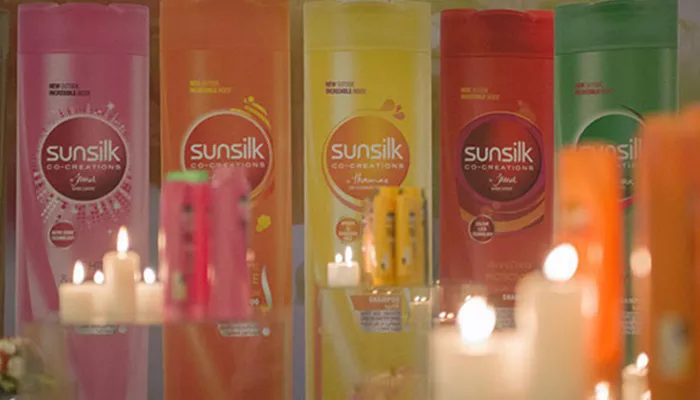Sunsilk, a brand synonymous with haircare for decades, has undergone significant transformations in recent years. Once a market leader in shampoos and conditioners, its journey reflects broader shifts in consumer preferences, technological advancements, and competitive pressures.
This article explores the history, challenges, and adaptations of Sunsilk, providing insights into its current position in the global haircare industry.
Historical Background: The Rise of Sunsilk
Launched in 1954 by Unilever, Sunsilk quickly became a household name. Its early success stemmed from its focus on addressing specific hair concerns, such as dryness, frizz, and damage, through scientifically formulated products. By the 2000s, Sunsilk expanded its reach to over 80 countries, offering variants like “Smooth & Manageable,” “Black Shine,” and “Dare to Repair.”
Its marketing campaigns, featuring celebrities and relatable narratives, cemented its reputation as a trusted brand for diverse hair types.
Market Shifts: Challenges in a Dynamic Industry
The haircare industry has evolved dramatically, driven by trends such as natural ingredients, sustainability, and personalized solutions. Sunsilk faced mounting competition from niche brands (e.g., OGX, Shea Moisture) and direct-to-consumer startups leveraging social media for rapid growth. Key challenges include:
- Natural and Organic Demand: Consumers increasingly prioritize sulfate-free, vegan, and eco-friendly formulations. Brands like Love Beauty and Planet (also under Unilever) gained traction, overshadowing Sunsilk’s traditional offerings.
- E-commerce Disruption: The rise of online shopping and influencer marketing shifted purchasing habits. Younger audiences gravitated toward brands with strong digital engagement, such as Function of Beauty, which offers customizable haircare.
- Regional Competition: In markets like Asia and Africa, local brands (e.g., Chik, Dabur) offered culturally tailored products at competitive prices, eroding Sunsilk’s dominance.
Innovation and Rebranding Efforts
To stay relevant, Sunsilk adopted several strategies:
Product Diversification
Natural Variants: Launched lines like “Botanicals” with coconut oil and aloe vera to align with clean beauty trends.
Tech Integration: Collaborated with AI tools to provide personalized hair diagnostics via mobile apps, though this lagged behind competitors like Olaplex’s virtual consultations.
Sustainability Initiatives
- Introduced recyclable packaging and reduced water usage in formulations. However, critics noted these efforts were less comprehensive compared to brands like Ethique (zero-waste bars).
Marketing Revamp
- Shifted from TV ads to TikTok and Instagram campaigns, partnering with micro-influencers to showcase real-user transformations. For example, the #StrongerHairChallenge emphasized hair resilience through before-and-after videos27.
Regional Performance: A Mixed Picture
Sunsilk’s global performance varies by region:
Asia: Remains strong in India and Southeast Asia due to aggressive pricing and localized variants (e.g., “Black Shine” for dark hair). However, competition from Patanjali’s herbal products impacted market share.
Latin America: Faced declines as consumers favored salon-grade brands like L’Oréal Professionnel.
Africa: Struggled against cheaper alternatives but maintained loyalty through community-focused campaigns (e.g., scholarships for young women).
The Impact of Adjacent Industries
The booming demand for hair accessories and wigs (e.g., China’s “top fashion” market for customizable wigs) indirectly affected Sunsilk. Consumers investing in high-quality wigs may reduce usage of haircare products, though Sunsilk introduced complementary lines like wig-conditioning sprays to tap into this niche.
Future Outlook: Opportunities and Threats
Opportunities
- Men’s Grooming: Expanding into male-centric products (e.g., thickening shampoos) as the men’s haircare market grows at 5.8% CAGR.
- Augmented Reality (AR): Partnering with AR platforms to let users “try on” hairstyles using Sunsilk products, similar to L’Oréal’s Style My Hair app.
Threats
- Ingredient Scandals: Controversies over parabens and silicones in legacy products could harm trust.
- Economic Pressures: Inflation and supply-chain disruptions in 2024–2025 forced price hikes, driving budget-conscious buyers to generics.
Conclusion
Sunsilk’s journey mirrors the turbulence of the modern beauty industry. While it retains a loyal base through affordability and accessibility, its future hinges on embracing sustainability, personalization, and digital innovation. By learning from competitors and leveraging Unilever’s vast resources, Sunsilk can reclaim its status as a haircare pioneer. For now, it remains a testament to adaptability in an ever-changing market.
Related topics:
The Best Sunsilk Shampoo for Hair Loss: A Comprehensive Guide
Combating Hair Loss Caused by Dandruff: The Definitive Guide
Does Biotin Promote Hair Growth? Experts Weigh In on the Popular B Vitamin


